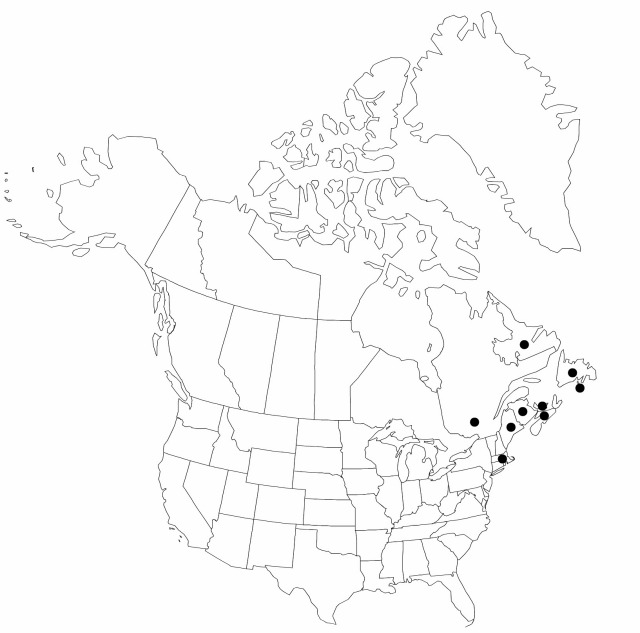Carex vacillans
in C. J. Hartman, Sv. Norsk Exc.-Fl., 131. 1846.
Plants not cespitose. Culms acutely angled, 15–60 cm, scabrous or glabrous. Leaves: basal sheaths brown; sheaths of proximal leaves glabrous, fronts lacking spots and veins, apex U-shaped; blades usually amphistomic, 2.8–4 mm wide, papillose or glabrous. Inflorescences: peduncle of proximal pistillate spike 0.6–1.7 cm; proximal bract equal to or longer than inflorescence, 2.5–5 mm wide. Spikes erect or the proximal pendent; proximal 2–4 spikes pistillate, 2.8–5 cm × 5–7 mm, base cuneate or attenuate; terminal 1–3 spikes staminate. Pistillate scales dark purple-brown, 2.5–5.5 × 0.9–1.8 mm (including awn), narrower than perigynia, midvein not reaching apex, 1/10–1/3 the width of scale, apex acuminate, aristate, awn scabrous. Perigynia ascending, pale brown, prominently 2–5-veined on each face, somewhat inflated, loosely enclosing achenes, thin-walled, widely ellipsoid to obovoid, 2.5–3.3 × 1.5–2.2 mm, dull, base with stipe to 0.2–0.5 mm, apex acute to rounded, papillose; beak weakly cylindric, 0.1–0.3 × 0.2–0.3 mm, entire. Achenes entire or slightly constricted on 1 face, apex rounded to slightly truncate, dull; style base straight to bent. 2n = 78, 79.
Phenology: Fruiting Jun–Aug.
Habitat: Saline, brackish shores, swales, salt and intertidal marshes
Elevation: 0–10 m
Distribution

St. Pierre and Miquelon, N.B., Nfld. and Labr., N.S., P.E.I., Que., Maine, Mass., Europe.
Discussion
Carex vacillans represents the apparently stabilized hybrid between C. nigra and C. paleacea. It occurs frequently within the common range of the two parents and is therefore considered to be a taxon of recent origin. Fertility is variable; most of the plants produce a few achenes. Carex vacillans represents almost all of what was previously known as C. recta, C. salina var. cuspidata, and C. salina var. fuliginea from the New England states, and about half of the reports of C. recta from the maritime provinces of Canada.
The circumscription of Carex vacillans follows the concept of N. Hylander (1982) and A. O. Chater (1980). Carex vacillans as recognized by E. Hultén and M. Fries (1986), at least for North America, is synonymous with C. recta. Carex vacillans differs from C. recta in having dark scales with a narrow central stripe, papillose and veined perigynia with a frequently scabrous beak orifice, and dark, dull, invaginated achenes. Intergrading individuals seem to exist, mostly with C. paleacea; they require additional study. Some of the specimens determined as C. lyngbyei for eastern North America were re-identified as C. vacillans (J. Cayouette 1987).
Selected References
None.
